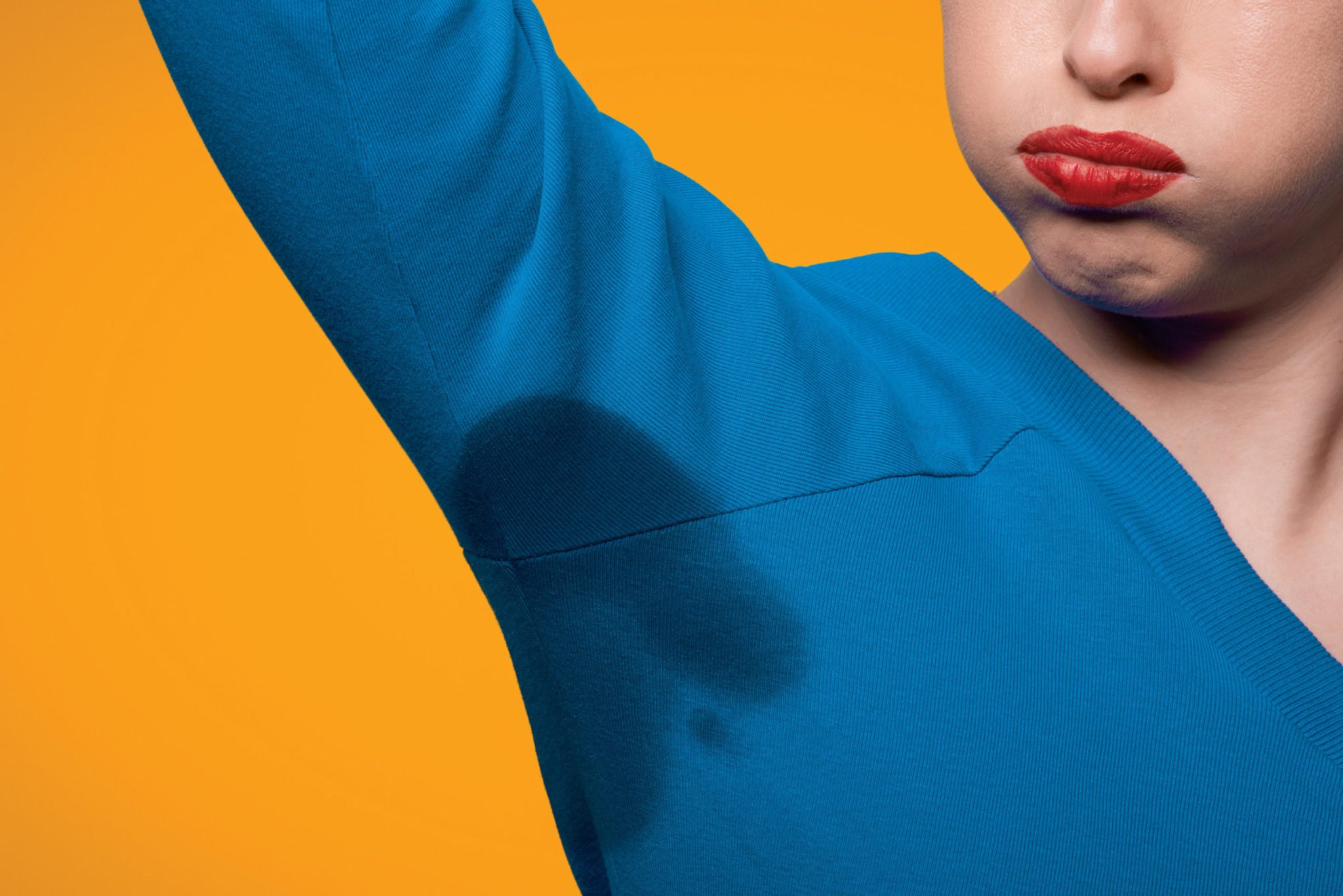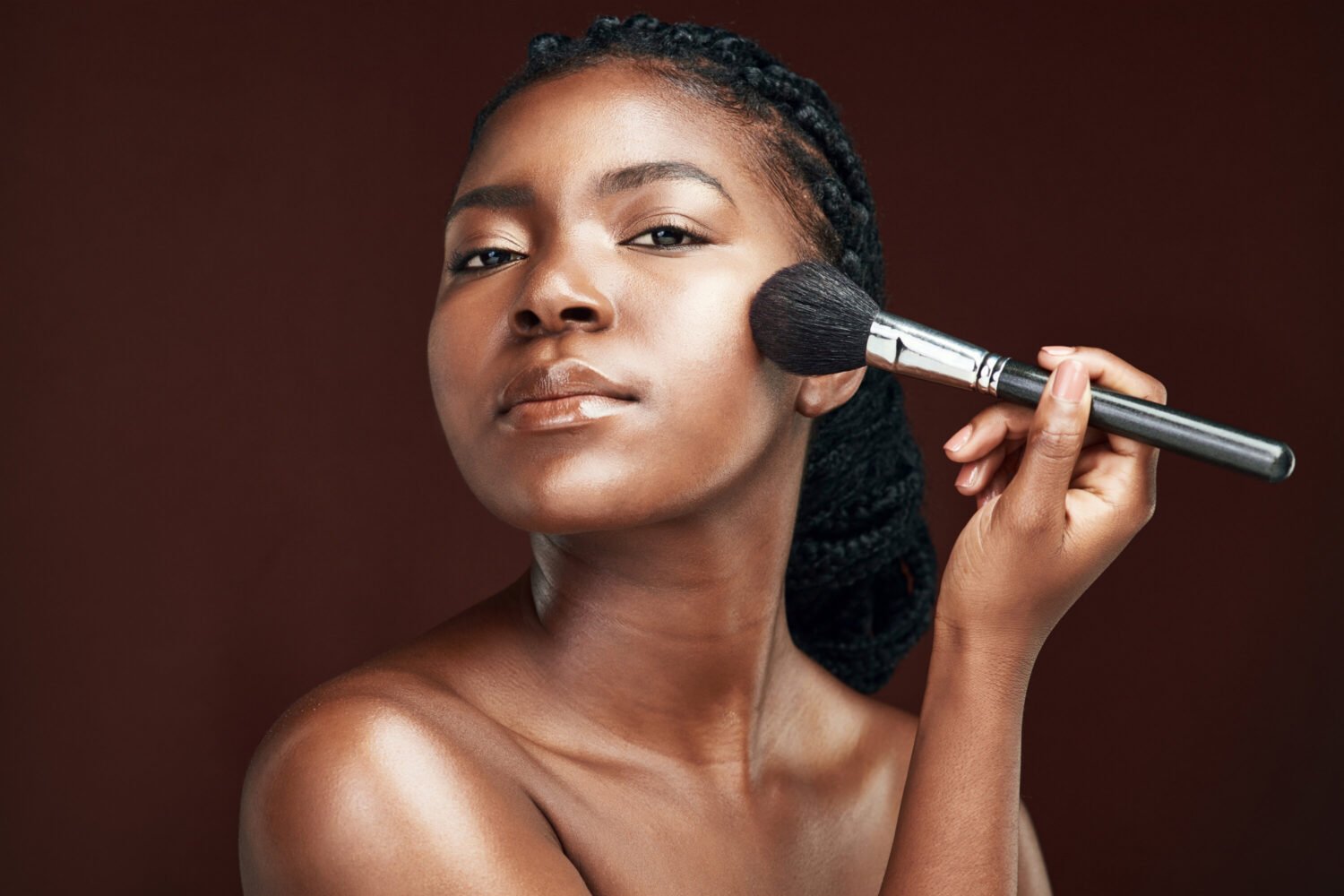From the south, the winds rise, carrying with them waterlogged air from the Atlantic and the Gulf of Mexico—an import even Trump can’t tax—up along the Potomac River, which adds more moisture to the already sopping-wet winds headed our way. It’s this particular pattern of air travel that produces the summers for which Washington is infamous. Legend has it that the capital was built on a swamp. It wasn’t. It’s all about prevailing winds. This is a fun myth to bust at a happy hour this month, when you’re drenched in sweat.
Ah, yes: the sweat. Summer is our shvitziest time of year. How do the locals prevent and manage this nuisance, which technically serves a medical function—cooling the body, blah, blah, whatever—but, for more practical and immediate purposes, is a menace that ruins clothes, causes breakouts, gets in our eyes, wreaks havoc on good hair and makeup days, makes us look nervous no matter our emotional state, and causes our thighs to chafe and stick to Metro seats?
“Mini-fans and spray bottles are my personal hacks,” one friend says. “Also, ducking into office-building lobbies for the air conditioning.” Another reports chopping her hair into an inverted bob “so my neck wouldn’t be covered in wet hair all summer.”
More tricks: Your pulse points are located at body parts that regulate heat, so if you’re perspiring like crazy at a bar or a party, get a drink on the rocks and hold it against the inside of your wrist. Bike shorts under dresses protect legs from all manner of stickiness.
Some Washingtonians spend the summer commuting in shorts and T-shirts and changing at the office. You can pretend you’re coming to work straight from the gym (responsible!) when really you’re just sweaty from walking outside for 20 minutes (relatable!). Some men invest in sweat-proof undershirts with built-in underarm pads ($27 on Amazon). Scan the sidewalk next time you’re downtown or near Capitol Hill and you’ll find that droves of working women have taken to wearing Rothy’s: lightweight, quick-dry, machine-washable flats.
For Eva McKend, congressional correspondent for Spectrum News, staying unsweaty is a professional necessity. “I’m on camera, so if I’m pouring sweat, that can be very distracting to the viewer,” she says. McKend wears breathable shoes such as Toms “because no one can see your shoes on camera,” and she keeps her hair “in braids or in my natural fro,” which makes styling in humidity a non-issue.
Not everyone gets sweaty while just going about daily life. But everyone perspires when working out. (If you don’t, maybe you aren’t working out hard enough? No offense.)
“I just accept that in May I’m going to start being miserable,” says Charlie Ban, editor of the website RunWashington. But being savvy about your timing can help. “It’ll be cooler in the morning but more humid,” he says. “If you don’t sweat that much, running in the morning is great because you can embrace the coolness. But I spend my mornings suffocating. If you sweat a lot, it’s better to run in the evenings.”
Ban recommends wearing a shirt even when it’s sweltering, because the wick-away fabric will pull sweat from your body (plus you can wipe your face with it). Another pro tip: “I’ll take a Ziploc bag full of ice and put it under a loose hat to give me an artificial chill for a little while. I’ll poke a hole in the corner of the bag so it drips down my back.”
While managing perspiration, it’s just as crucial to ensure you’re hydrated. “There are people who carry water with them, [but] I’m not necessarily an advocate of that—it’s cumbersome,” says Jerry Alexander, a coach at Georgetown Running Club. He’s definitely not an advocate of the water-bottle belt: “Not only does it look ridiculous, but it weighs you down, and that can start chafing.” Instead, Alexander recommends “planning a run around where there’s water fountains. Or, if you’re running on Hains Point, leave your car down there and have water in your car, and every time you go by, stop at your car.” (Ban, on the other hand, isn’t anti-water-belt, though he concedes it can look silly: “My vanity is not a problem anymore, and I have no problem carrying a bottle of water when I run. I need all the help I can get.”)
For any exercise in which you’ll be staying in roughly the same place—tennis, a soccer match, one of those boot camps in a field—Karolin Nilsson, a CrossFit coach, suggests putting a towel in the fridge or freezer the night before, then sticking it into a cooler you can bring with you to stay extra-chilled during your workout.
These life hacks are all well and good for most ordinary civilians. But what about higher-profile Washingtonians? What do they do in summer to avoid looking like they’re on the losing side of the Kennedy-Nixon debates?
According to Tina Alster, founding director of the Washington Institute of Dermatologic Laser Surgery, they come to her. “A lot of my patients are in front of cameras and on hot seats, so they’re very cognizant, if they’re on TV being interviewed or on the Hill testifying, that they do not want to look like they’re perspiring.”
Have you ever wondered why it’s so rare to see beads of sweat on the foreheads of anyone whose face graces an HDTV screen? How politicians, anchors, and actors are able to seem as if they literally never perspire no matter what the circumstances? Alster says they all are getting injections of Botox or Dysport under their arms: “If you don’t see them sweat, they’re doing something.”
According to Alster, Hollywood arrived to this party first. “Any actress I’ve ever known to go to the Oscars gets Dysport under her arms” she says. “That is a given. I don’t know anybody who doesn’t do that. In Washington, we’re so far behind. But I’ll be honest with you: People here have no idea what people spend in order to look good on camera.”
The treatment is short and “relatively painless,” Alster says—a topical anesthetic is applied about half an hour before the injections—and “the effect is a total blockage of perspiration in the injected areas” lasting about four to six months. The most common application is under the arms, but Alster has also treated the scalp. There’s a more permanent option, too: miraDry, which uses microwave technology to destroy sweat glands under the arms. Botox or Dysport will set you back $750 to $1,500 per treatment; miraDry is about $2,500 to $3,000.
Anthony Brown, a native Washingtonian, struggled with sweat year-round, he says: “I had severe perspiration, to the point of having to get rid of shirts. I’d wear undershirt pads or a blazer, but I’d sweat to the point where I sweated through the blazer.” A few years ago, “I was at a point where I just really wanted to do something.”
Brown got miraDry, which caused swelling for a couple of weeks. “It almost felt like having golf balls under my armpits,” he says. But the side effect didn’t limit his regular activities, and once that subsided, the treatment “was definitely life-changing.” Before, he figures, people “probably thought I was really nervous. My sweat was noticeable with almost anything.”
Though Brown was never diagnosed with a severe sweating problem, for a small percentage of people, excessive perspiration signals something more serious: hyperhidrosis, a condition in which an individual produces significantly more sweat than is needed to cool the body. Malcolm Brock, a professor of surgery at Johns Hopkins Hospital and medical director at Johns Hopkins Center for Sweat Disorders, typically treats patients who fall into that category. “Some people have dripping hands, so they don’t want to shake hands. They change their shirts several times a day,” he says. “Some people can’t wear certain types of shoes because they fill them with sweat. We find that the anxiety and the embarrassment can be very crippling.
“If people are waking up in the morning thinking about their sweating,” adds Brock, “they need to see a doctor because some sweating can be also a sign of other problems.”
For most, though, perspiring is more of a manageable mood-and-outfit destroyer than a cause for medical concern. (For what it’s worth, August is typically cooler than July around here, so if you’ve made it this far, you should be in the clear.) But if you can no longer tolerate Washington’s obscene humidity, there’s always running coach Alexander’s joyfully defeatist advice: “I think the only way to avoid getting sweaty for the summer is to relocate to Maine for three months.”
This article appears in the August 2019 issue of Washingtonian. An earlier version of this story referred to DC as the second-sweatiest city in the nation; that was based on a 2017 ranking which has since been updated.



















